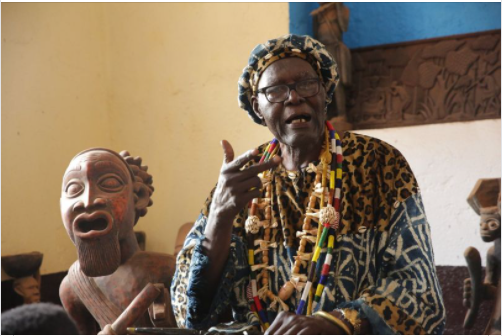A few days ago, rumours circulating the internet suggests that Chief Sokoudjou is dead. The source of this fake news claimed to have received the message of the chief’s death from a notable in the Bamendjou chiefdom. Several social media post about his death are now deleted.
April 22, the chief took to his social media page to lay rest to the rumours about him passing away.

“only the ancestors will determine when to send him home because he still has a task to perform on earth”, Chief Sokoudjou of Bamendjou
He went further to say when it’s his time to die he would not without telling his closest confidants. For those who wish him death, he will live long enough to bury them.
Biography

Chief Fo’o Jean-Rameau Sokoudjou, who was born in 1940, recently marked his 94th birthday with joy and gratitude. He is the ruler of the Bamendjou people, one of the Bamileke ethnic groups in Cameroon. He ascended to the throne on December 26, 1953, after the death of his father. Chief Sokouodjou was only 13 years old when he faced the challenge of becoming a leader and a protector of his people’s traditions and values.
Cameroon Check does not support fake news, hate speech or unaccountability in media use.
Fake news is misinformation that twists or makes up facts to sway public opinion or gain benefits. It can change the narrative of a real story to fit an agenda or bias. It does this by adding, omitting, or exaggerating details. A natural disaster occurred. A fake news outlet blamed a group, country, or ideology. It used false or exaggerated details. The outlet wanted to spread fear and hatred. It did not care about the truth or the victims. Or, it may ignore or downplay important aspects of a real story to mislead or distract the audience. By changing the narrative, fake news outlets can influence the emotions and perceptions of their audience, and damage the reputation and trust of real sources of information.
